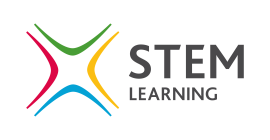- View more resources from this publisher
 National STEM Learning Centre and Network
National STEM Learning Centre and Network - View more resources from this publisherResearch Councils UK - UKRI
Biomaterials and the treatment of AMD
These resources can be used as a context to look at 14-16 and post-16 biology curriculum areas of:
• vision and the eye
• structure and function of the retina
• development and use of biomaterials
• tissue transplants and stem cells in the treatment of human disorders
• working scientifically – experimental skills, analysis and evaluation
In the first activity, students design a series of tests to see how different objects and colours are detected and perceived throughout the field of vision. This helps to give students an understanding of how the eye functions and also an indication of the distribution of the different photoreceptors in the retina.
Dr Kearns describes how expanded Polytetrafluoroethylene (ePTFE) is being modified and used as a substrate for the growth of retinal cells. The aim is to develop a transplantable membrane that can help prevent loss of retina function. The subsequent activities model some of the tests that Dr Kearns’ and her group perform on their modified ePTFE to test how different modifications affect the properties of the membrane.
Victoria Kearns -introduction
The eye and age-related AMD
Biomaterials and treatments for AMD
Show health and safety information
Please be aware that resources have been published on the website in the form that they were originally supplied. This means that procedures reflect general practice and standards applicable at the time resources were produced and cannot be assumed to be acceptable today. Website users are fully responsible for ensuring that any activity, including practical work, which they carry out is in accordance with current regulations related to health and safety and that an appropriate risk assessment has been carried out.




